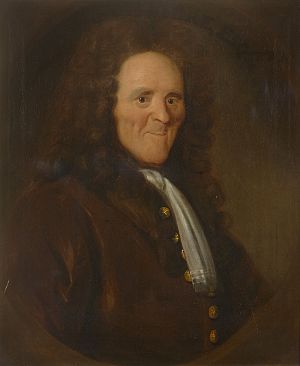Paul Buissière facts for kids
Paul Buissière (died 1739) was a skilled French surgeon and anatomist. He moved to England and became a very respected medical professional there.
Contents
Life of Paul Buissière
Buissière was a Huguenot, which means he was a French Protestant. He worked in the principality of Orange before moving to Copenhagen. He then settled in England. He became an English citizen on October 10, 1688.
Buissière's Medical Practice
Paul Buissière built a strong reputation as a surgeon in London. His practice was located on Suffolk Street, near Pall Mall. He was known for treating important people. For example, he was the surgeon for Robert Harley, a leading statesman. Harley was injured in March 1711. Buissière also treated the person who caused the injury. Many years later, in November 1737, he was called to help Queen Caroline of Ansbach. She was very ill at the time. Even though he was thought to be over 80 years old, he was still seen as London's top physician.
Contributions to Anatomy
Buissière was one of the first people to offer lectures on anatomy and physiology in England. Anatomy is the study of the body's structure. Physiology is about how the body works. He was made a foreign member of the Royal Society in 1700. The Royal Society is a famous group for scientists. He became a full member in 1713 and joined its council in 1719.
Later Life and Legacy
Paul Buissière passed away at his home in Suffolk Street in January 1739. He left money to the French Hospital in London. He had been elected as a governor of this hospital in 1729.
Works and Publications
Buissière wrote several important medical papers. He shared his knowledge through books and articles.
- Lettre à M. Bourdelin pour servir de réponse au sieur Méry sur l'Usage du Trou ovale dans le Fœtus, Paris, 1700. (A letter discussing the oval opening in a fetus's heart.)
- Nouvelle Déscription anatomique du Cœur des Tortues terrestres de l'Amérique et de ses Vaisseaux, Paris, 1713. (A new anatomical description of the heart of American land turtles.)
He also wrote six papers on anatomical topics for Philosophical Transactions. This was a well-known scientific journal. Other papers appeared in the Mémoires of the Academy of Sciences of Paris. He became a corresponding member of this academy in 1699. He also wrote for Acta Eruditorum. Buissière also exchanged scientific letters with Sir Hans Sloane. These letters are now kept in the archives of the Royal Society.


